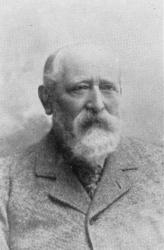Planning worship?
Check out our sister site, ZeteoSearch.org,
for 20+ additional resources related to your search.
- |
User Links
Person Results
Simon Zachariah
b. 1951 Translator of "തൊണ്ണൂറ്റിയൊൻമ്പതു ആടുകൾ ക്ഷേമമായ് ആലയിൽ" in The Cyber Hymnal
Simon Zachariah
John Barathi
Person Name: S. John Barathi Translator of "அந்த தொண்ணூறும் ஒன்பதும்" in The Cyber Hymnal
John Barathi
Speros Demetrios Athans
1883 - 1969 Person Name: S. D. Athans Author of "La Oveja Perdida" in Melodias Evangelicas para el Uso de las Iglesias Evangelicas de Habla Española en Todo el Mundo Speros Demetrios Athans was born 1883 in Turkey. Raised in the Greek Orthodox Church, Athans left home at age 15, after his father’s death. He spent two years on the island of Corfu, Greece, and two more in Egypt, then went to Great Britain, where he worked as a sailor. In 1903 he went to America, and during immigration processing, someone gave him a New Testament in Greek. A year later, he joined a Nazarene church in Chicago, Illinois. He then enrolled in a Bible school and university. While in school in California, he began to study Spanish and to work with the Latino community. In 1910 he decided to work in evangelism. In 1931, he joined the Methodist missionary work in Latin America, retiring in 1949.
© The Cyber Hymnal™ (hymntime.com/tch)
Speros Demetrios Athans
Clarence Bicknell

1842 - 1918 Translator of "Feliĉe kuŝis la naŭdek naŭ" in TTT-Himnaro Cigneta Clarence Bicknell (27 October 1842-17 July 1918) was a British amateur botanist, painter and archaeologist, with a doctorate in mathematics, and an Anglican priest (in Italy, from 1877 until he left the Church, date unknown). He was born in Herne Hill, England, on October 27, 1842, and died in Tenda (then in Italy, but since 1947 in France) on July 17, 1918.
Arriving in Italy in 1877 to work as an Anglican vicar, he built a museum ("Museo Biblioteca Clarence Bicknell") in Bordighera to house his botanical and archaeological collections. He became noted for his identification of the plants and petroglyphs of the Ligurian Riviera. His writings included Flowering Plants of the Riviera and Neighboring Mountains (1885) and Guide to the Prehistoric Rock Engravings of the Italian Maritime Alps (1913). In addition to his own museum, his collections were archived at the University of Genoa.
A Volapükist, he left that language for Esperanto in 1897. He attended the first international Esperanto convention, at Boulogne-sur-mer, France, in 1905. He produced a number of hymns that are still in use (seven translations and one original in Adoru Kantante (1971), and nine texts in Adoru (2001). He was active in work on behalf of the blind, and transcribed many Esperanto books into braille. In addition to his hymnic work, he wrote many original poems in, and translated secular poetry into, Esperanto, including Macaulay's "Horacio", 1906; Tennyson's "Gvinevero", 1907; pieces by Sturgis; Giacosa's "Ŝakludo", 1915. He also provided monetary support to many Esperanto activities, and founded and led until his death the local Esperanto club in Bordighera.
Regrettably, the date, reason, and nature of his "leaving the church" is not explained in the sources consulted (mainly the English, Italian, and Esperanto Wikipedias and the author indexes of the Esperanto hymnals).
See also http://www.clarencebicknell.com/index.php?option=com_content&view=article&id=16&Itemid=157&lang=en at clarencebicknell.com, the website of the Clarence Bicknell Association.
Leland Bryant Ross
Clarence Bicknell


 My Starred Hymns
My Starred Hymns

